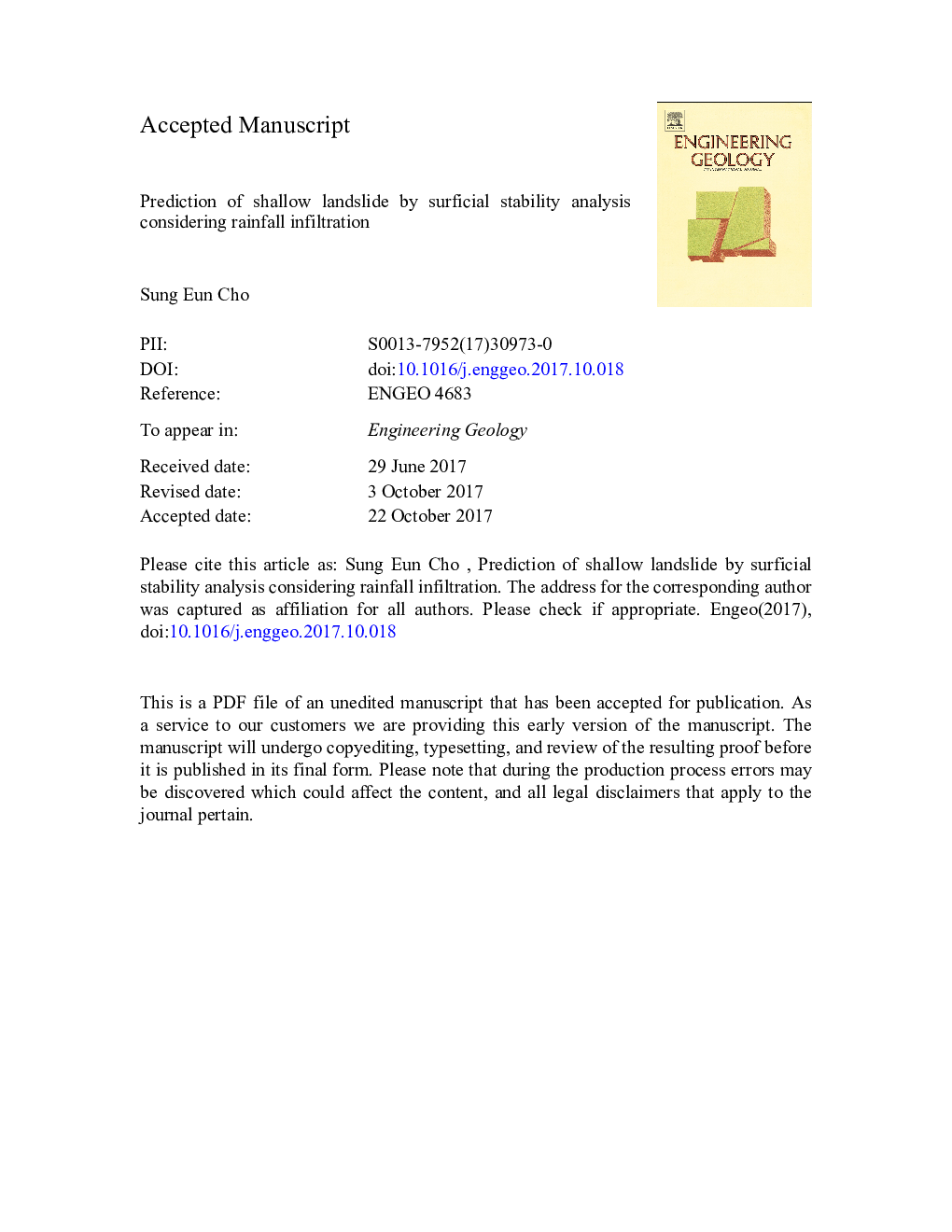| Article ID | Journal | Published Year | Pages | File Type |
|---|---|---|---|---|
| 8916026 | Engineering Geology | 2017 | 49 Pages |
Abstract
In Korea, where shallow deposits of weathered residual soil exist on bedrock in hillslopes, the full saturation of the soil layer caused by reaching of rainwater from the slope surface to an impermeable bedrock is one of the important causes of landslides. Landslides can lead to a shallow failure surface that passes through the contact between soil and impervious bedrock. In this study, a stability analysis method for slopes with a shallow bedrock was developed to predict landslides. The method is based on a one-dimensional conceptual infiltration model that considers an initial inhomogeneous water content distribution. Constant intensity of rainfall was considered and shallow impermeable boundary conditions were imposed on the Green-Ampt model to simulate the impermeable bedrock underlying the weathered residual soil. To consider a hillslope with weathered residual soil when the rainfall intensity is less than the infiltration capacity, the Green-Ampt model was modified to simulate rainfall intensity that is smaller than the soil's saturated hydraulic conductivity. A series of stability analyses were performed for slopes with known hydraulic properties to evaluate the applicability of the proposed procedure. The prediction results were then compared with those obtained by the stability analysis based on the infiltration results from numerical analysis. The results showed that the proposed method can be used to predict landslides due to rainfall infiltration by efficiently considering the movements of the saturated region in hillslopes that have shallow impermeable bedrock.
Related Topics
Physical Sciences and Engineering
Earth and Planetary Sciences
Geotechnical Engineering and Engineering Geology
Authors
Sung Eun Cho,
